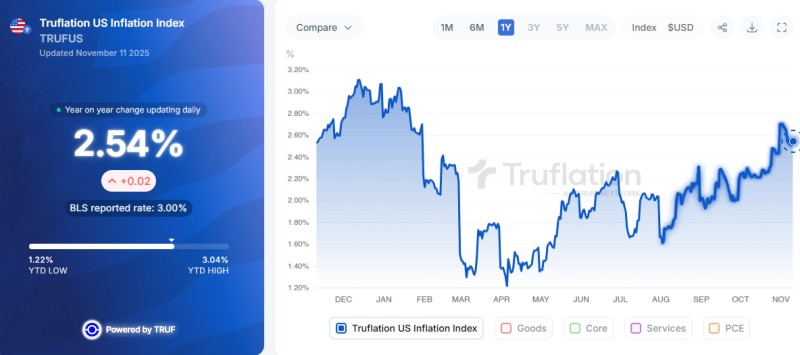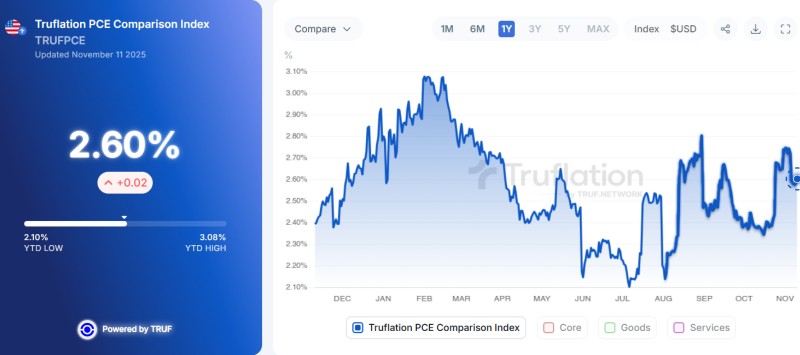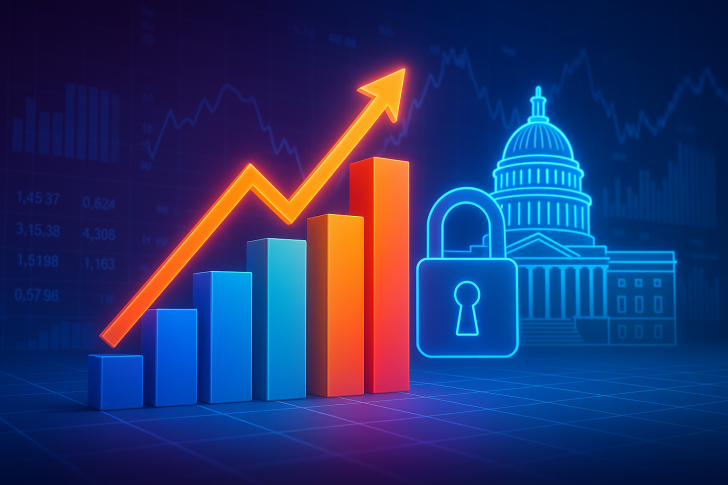⬤ U.S. inflation is holding steady according to Truflation's independent tracking, with the Truflation US Inflation Index at 2.54% and the Truflation PCE Comparison Index at 2.60%. With the government shutdown now in its sixth week, these private-sector indicators have become critical—official data channels are dark, and policymakers are flying blind across major parts of the economy.

⬤ While no formal tax proposals have been introduced during the shutdown, ongoing fiscal talks in Washington have some analysts worried. If new tax measures were to emerge once the government reopens—while economic data is still incomplete—it could hit already-stressed industries hard. Smaller firms might face financial strain, and retaining skilled workers could get tougher. These are general concerns tied to the data blackout, not specific policy plans.

⬤ The shutdown has created an unprecedented gap in federal economic data. Major reports that have been delayed or missed include jobless claims, the September jobs report, international trade figures, retail sales, PPI, GDP estimates, JOLTS, and multiple weekly labor updates. Even October's CPI came out ten days late. This week's CPI and PPI releases are unlikely to arrive on time—and if they do, they'll be based on estimates rather than real data collection, making them less reliable.


⬤ The longer this drags on, the harder it'll be for agencies to piece together accurate historical data later. Right now, Truflation is one of the few independent sources still delivering high-frequency inflation signals that resemble CPI and PCE readings. Until Congress passes a reopening bill, private indicators like these are the main lifeline for analysts, investors, and anyone trying to make sense of where the economy actually stands.
 Usman Salis
Usman Salis

 Usman Salis
Usman Salis

